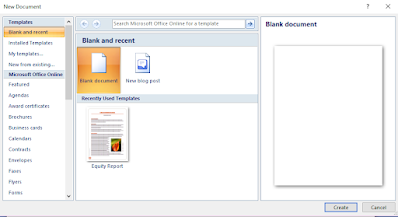An operating system is a program that acts as an intermediary between a user and the computer hardware. The purpose of an operating system is to provide an environment in which a user can execute programs in comfortable and efficient manner. The operating system enables the user to use the system resources and access several other programs effectively.
BASICS OF OPERATING SYSTEM:
An operating system (OS) is a set of system software programs in a computer that regulate the ways applications software programs use the computer hardware and the ways that user control the computer. For hardware functions such as input/output and memory space allocation, operating system programs act as an intermediary between application program are usually executed directly by the hardware.
The job of an operating system for a computer is mainly to menage the hardware and software resources of the system. The hardware sources include processor, hard disk, memory, mouse, printer, other peripherals are the controls and executes by the help of drivers of these hardware & operating system program.
All kinds of application and utilities are runs and repairs with the help of operating system program in the computer. It provides a platform for operate the applications.
Some examples of operating systems include Apple macOS, Microsoft Windows, Google’s Android OS, Linux Operating System, and Apple iOS. Apple macOS is found on Apple personal computers such as the Apple Macbook, Apple Macbook Pro and Apple Macbook Air. Microsoft Windows is found on a variety of personal computer platforms from brands such as HP, Dell, and Microsoft itself.
FUNCTIONS OF OS:
An operating system performs the following functions:
- Processor Management: The operating system assigns processors (if a computer has more than one processor) to the different tasks that must be performed by the computer system.
- Memory Management: It allocates the main memory and secondary memor to the system programs, user programs and data.
- Input and Output Management: It carries out the input and output management and co-ordinates and assigns different input and output devices.
- File Management: -It manages files on various storage devices and the transfer of these files from one storage to another. It also allows all files to be easily changed and modified through the use of text editors or some other file manipulation software applications.
- Scheduling: It establishes and enforces the job priority. That is, it determines and maintains the order in which jobs are to be executed in the computer system.
- Timesharing: It co-ordinates and assigns compilers, assemblers, utility programs and other software applications to various users working on the computer system.
- Security Management: It establishes data security and integrity. That is, it keeps different programs and data in such a manner that they do not interfere with each other. Moreover, it also protects data from being destroyed by wrong user.
- It produce dumps, traces, error messages and other debugging and error-detecting codes.
- It maintains internal time clock and log of system usage for all other users.
- If facilities easy communication between the computer system and the computer operation (Human).





No comments:
Post a Comment